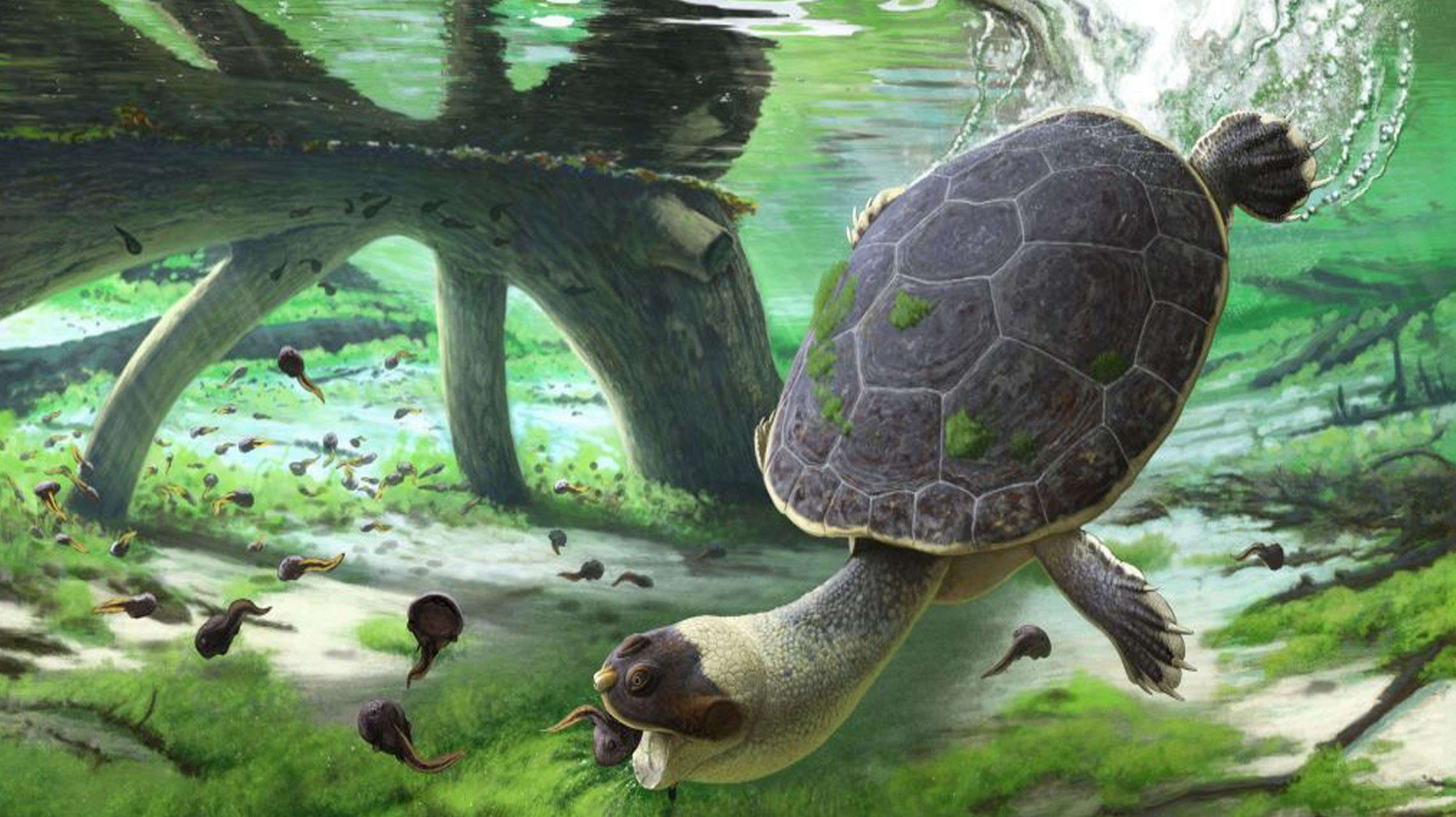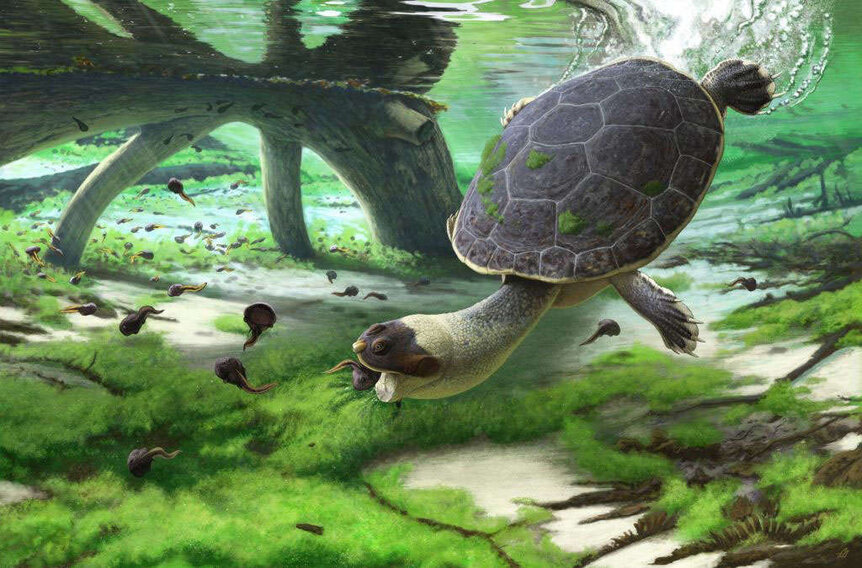Create a free profile to get unlimited access to exclusive videos, sweepstakes, and more!
The frog-mouthed turtle of Boo Boo Bear lore was real, and everything it sounds like

If you Google "frog-mouthed turtle," questions about whether such a thing (or its inverse, the turtle frog) actually exists will come up. Well, the only reason it doesn’t exist is that it’s extinct.
The Cretaceous turtle Sahonachelys mailakavava didn’t star in any movies. However, a fossil that crawled out of Madagascar has revealed that it looked eerily similar to Boo Boo Bear's "Frog-Mouthed Turtle" from 2010's forgettable live-action/CGI film, Yogi Bear, because it pretty much had a frog face attached to the body of a turtle. It is also as rare as Boo Boo’s bizarre amphi-reptile. Only one specimen of what is also known as the quick-mouthed frog turtle has surfaced, and any prehistoric turtle skeleton still intact after 100 million years is usually unheard of.
As if S. mailakavava wasn’t weird enough, it was a suction feeder. It evolved to suck in water filled with small fish and invertebrates with its gaping mouth. Paleontologists Walter Joyce, David Krause, and their colleagues recently published a study about thier strange find in Royal Society Open Science.
“All aquatic turtles need to partially 'inhale' their prey when feeding underwater, as the closing jaws otherwise force away the food item while biting,” Joyce, who led the study, tells SYFY WIRE. “A turtle may have an advantage if it starts to feed on moving prey, which demand more suction, as they can swim away. Once this mode of feeding is preferred, any adaptation that optimizes suction feeding receives position selection over the eons.”
What natural selection gave this creature was a mashup of features that appear like it came out of the unnatural union of a bullfrog and a snapping turtle. Turtles either eat by ram feeding or suction. The ram motion involves the turtle lunging forward to clamp its toothless jaws down on prey before it sucks that prey in to keep it from escaping. Suction feeding is exactly what it sounds like. S. mailakavava must have evolved in an environment where it was able to get fast food through this method, which is also how it got its extremely flat skull that allowed it to maximize how many critters it sucked in without creating waves that washed them away.
Because the quick-mouthed frog turtle needed to optimize everything that gave it an advantage in suction feeding, it also ended up developing lightweight jaws that barely needed any effort to open, a black hole of a mouth, and tough hyoids, or tongue bones, which are vestigial in humans. Hyoids in its lower jaw were held in place by muscles much as they are in extant turtles. Joyce has an idea as to why S. mailakavava was the only turtle in its group to have turned into what was, at least to tadpoles and fish spawn, a monster that sucked them in.
“Generalists can easily evolve into specialists by focusing on a particular function, but it is difficult for specialists to switch specialized functions,” Joyce says. “The vast majority of pan-podocnemidids are crushers with strong jaws that crack hard-shelled prey — the opposite adaptation from the Madagascan turtles. This may be a reason why the group otherwise never developed suction feeding."
S. mailakavava was found to be related to podocnemidid turtles through phylogenetic analysis, which is a method of creating diagrams that show the phases of evolution that organisms undergo as they branch out from their common ancestors. This kind of analysis also helps scientists figure out how many related species there are in a certain group and their genetic relationships. Joyce and his team used a computer program that they fed information about the morphology of both extant and extinct turtles so it could show where exactly the quick-mouthed frog turtle fit in. Phylogenetic analysis assumes species that look alike are related, though cases of convergent evolution are sometimes problematic.
Studying the entire skeleton, shell and all, of an extinct turtle was a rare opportunity for the researchers. What remains of most prehistoric turtles is usually just a shell or skull. The deceptively featureless shell of S. mailakavava, already something you don’t see every day in turtles, could easily be mistaken for another pan-podocnemidid. Maybe the shell never became distinctive because it never needed to be. It is its skull that makes the species stand out.
“The shell basically stayed the same, but the skull, on the other hand, adapted quickly, as it was the body part that interacted most intensely with the environment and therefore was subject to strong natural selection,” Joyce says. “This just shows that evolution can act quite differently on different parts of the body.”















